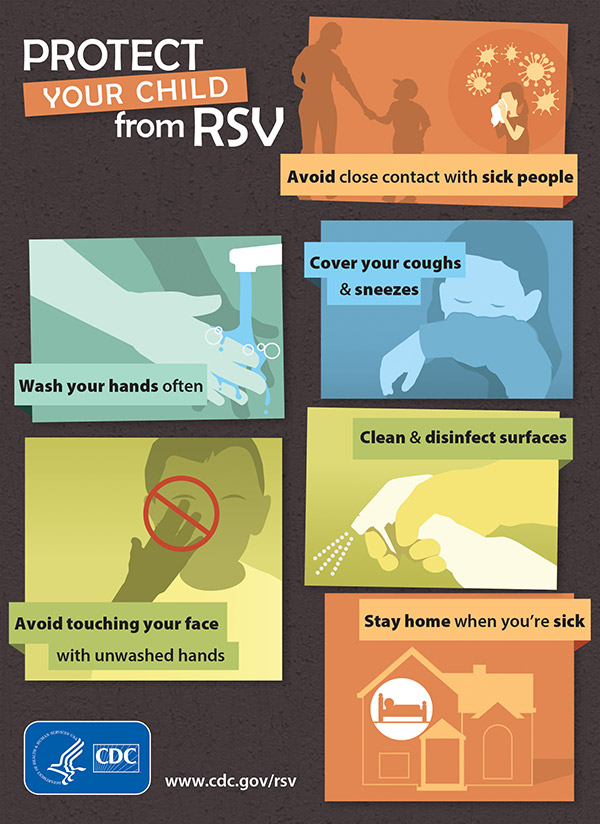The dreaded RSV season is upon us. With that being said, I’m going to go over what is RSV, symptoms, and prevention. RSV is a major cause of respiratory illness in young children and is highly contagious. The RSV season lasts from late fall through early spring.
So, what is RSV? Well, Respiratory syncytial virus (RSV) is a respiratory virus which infects the lungs and breathing passages. The virus is only transmitted between people. People that are healthy usually experience mild, cold-like symptoms and recover in a couple weeks. For infants and older adults, RSV can be serious. It can cause severe lung infections like bronchiolitis and pneumonia. It is said that almost all children, by their second birthday have had an RSV infection. That is a lot of children folks!
How can you get RSV? The virus spreads when an infected person coughs or sneezes which creates virus-containing droplets that can linger briefly in the air. You can also pick it up by touching surfaces that have RSV on them and then touching your eyes, nose, or mouth. RSV then enters your body through the nose, mouth, or eyes. The virus can survive on your hands for at least 30 minutes and for several hours on infected surfaces. If you are infected with RSV then you are usually contagious for three to 8 days. However, some people with weakened immune systems can be contagious for up to four weeks. Holy Toledo! Four weeks!
What are the symptoms of RSV? Symptoms start showing up four to six days after exposure. A lot of the symptoms resembles the common cold which are:
- Fever
- Runny Nose
- Reduced Appetite
- Cough
- Wheezing
- Sneezing
- Congestion
- Breathing Difficulties
- Apnea
In young infants the only symptoms may be:
- Irritability
- Decreased Activity
- Breathing Difficulties
How can you prevent the spread of RSV? There is not an RSV vaccine yet but researchers are working to develop one. However, there are steps you can do to help prevent the spread of RSV.
- Wash Your Hands Often – Use soap and water for at least twenty seconds and help young children do the same.
- Keep Your Hands Off Your Face – Unless you just washed your hands, keep them off your face. Remember this is how the virus is spread.
- Avoid Close Contact With Sick People – Again, this is how the virus spreads.
- Cover Your Coughs and Sneezes – Once again, if you don’t cover your coughs and sneezes you are spreading the virus through the air and surfaces.
- Clean and Disinfect Surfaces – Remember the virus can spread just by touching surfaces.
- Stay Home When You Are Sick – Just stay home! I’m sure I’m not the only one who doesn’t want to be sick too!

Have you heard of the medicine for RSV? It’s called Synagis Palivizumab. It is a prescription medication that is used to help prevent a serious lung disease caused by RSV in children that are high risk for severe lung disease from RSV. But it has no effect after the disease has started. Synagis is a shot given in the thigh muscle once a month during RSV season. If you are interested in learning more about this shot please talk to your pediatrician. The shots can be very costly and your insurance may not approve the medicine.
So there you have it! You now know what RSV is, how you can get RSV, symptoms of RSV, prevention of RSV, and the medicine for RSV. Please keep in mind, I’m not a doctor nor do I give any medical advice. If you are interested in researching more, you can check out the CDC’s website or consult with your pediatrician or doctor.
